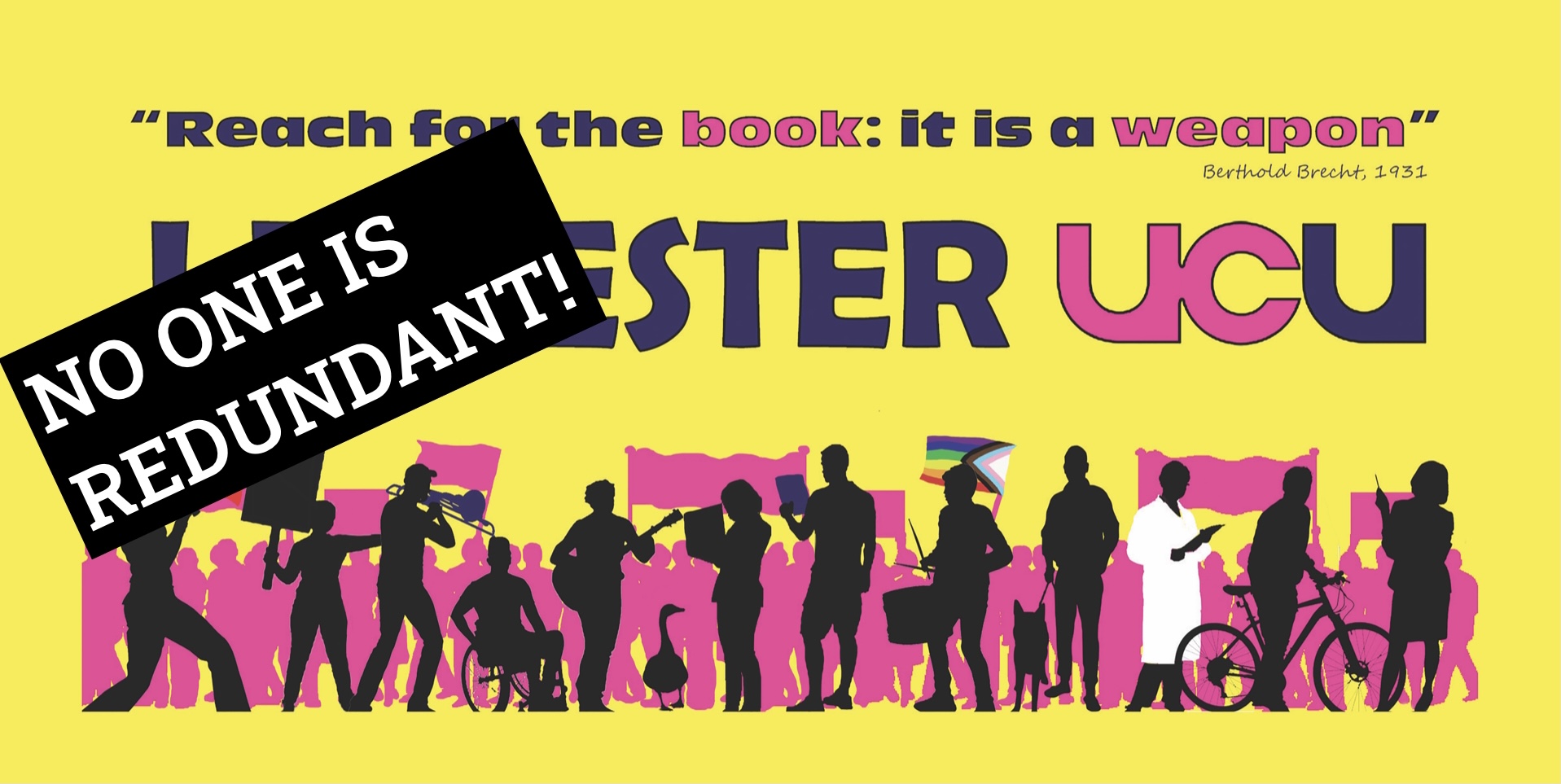Published: 11th October, 2021

As you will be aware, Phase 2 of the redundancy process began in September 2021. Here, we share some of the proposed changes that will, the Executive Board state, result in a reduction of five posts. However, the impact will be far reaching, as it will ultimately affect many academics and professional services staff across the University of Leicester.
The Case for Change for the Research and Enterprise Division and PGR professional services impacts not only the ‘Corporate’ division (RED), but also College areas which support academics. The restructure states that 35 members of staff are at risk of redundancy, and the University expect to make 5 staff compulsorily redundant, even though they could offer VSS, redeployment or one of the many new posts in the new structure.
There is a net decrease of professional support with higher expectations of workload, directed to commercially driven objectives. Research support appears to be secondary, albeit the vision to be a world-leading research university.
College administrative support in CSSAH and CLS are also the most affected in the ratio of number under risk of redundancies. The extent of the risk of redundancies has a wide impact to all the operations of RED professional services, ranging from finance, grants, contracts and
commercial to college administrators.
The objective mentioned in the Case for Change is to provide proactive and high-quality professional support across the full research, enterprise and postgraduate research (PGR) divisions. However, there is no mention on further resources, tools or training that is essential to help resolve the existing problems or even implement the new structure.
Given that, since 2019, we have lost a great number of staff (between 100-150), the new structure intends to increase the workload of individuals by expanding their job descriptions, and has teams and staff applying for a very different role. This has clearly undermined their expertise and skills and will leave gaps in areas that are outside of the university systems which need assurance and compliance and reduce the risks to the University’s legal position.
The analysis has taken more than a year to be produced but has not considered the pipeline, work functions and external demands (funders – the customers it serves) in each of the teams. The overall view is a deep hierarchical structure, which appears at first instance to increase the fragmentation of communications, which is the very issue that it is ironically trying to resolve. Managing staff overheads will increase. It appears to have more silos than in the previous flatter
structure. A lot of time will be devoted to the activity of managing or multiple managing.
Merging teams to increase flow of communications is fine; however, if you lose staff dealing with finance or legal documents for example, this will increase the waiting list for supporting academics.
Emphasis is given to commercial aspects with no proper strategy and detail on how they plan to implement it. Changing job descriptions and making additional managers is not evidenced to increase effectiveness of the teams. Errors in staff roles and new positions already fulfilled indicates they have not consulted staff properly and it represents a lack of respect.
Finally, this strategy of making staff redundant aligns with the UK Government’s
‘Levelling Up’ agenda, and gives an idea of how alienated management is with the amazing work that Professional Services staff do.